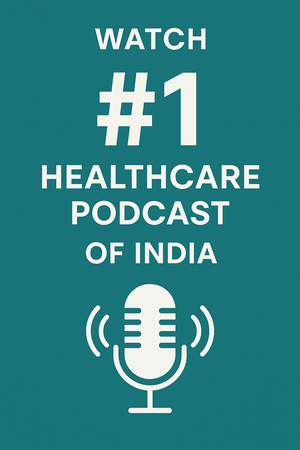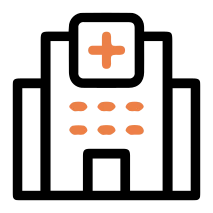Pierre Robin Sequence (PRS) is a rare congenital condition that affects a child’s jaw, tongue, and airway. While the term “sequence” may confuse many, it simply means a series of abnormalities that stem from an initial defect during early fetal development. Children born with PRS often face feeding and breathing difficulties, especially in the neonatal period.
The name “Pierre Robin Sequence” is derived from the French physician Pierre Robin, who first described the condition in the 1920s. Though not always life-threatening, PRS can significantly affect a child’s quality of life and development if not managed properly. Early diagnosis and a multidisciplinary approach can make a remarkable difference.
This article offers a compassionate yet medically sound explanation of Pierre Robin Sequence in children, including causes, symptoms, diagnosis, treatment, and prognosis. SEO keywords like “Pierre Robin syndrome symptoms,” “jaw abnormalities in infants,” “pediatric airway disorders,” and “treatment for Pierre Robin sequence” are used to reach and educate a wider audience.
What is Pierre Robin Sequence?
Pierre Robin Sequence (PRS) is a birth condition characterized by a small lower jaw (micrognathia), a tongue that falls back into the throat (glossoptosis), and airway obstruction. Often, a cleft palate is also present.
The term “sequence” is used because the small jaw leads to the backward displacement of the tongue, which then interferes with the closure of the palate and causes breathing and feeding problems. These abnormalities are interconnected, rather than independent birth defects.
Causes of Pierre Robin Sequence
What Leads to PRS in Children?
The exact cause of Pierre Robin Sequence in babies is still not fully understood. It is believed to result from disruption during early facial development in the womb, typically around the 7th to 10th week of gestation. This disruption prevents the lower jaw from growing normally, which leads to a cascade of anatomical changes.
PRS may occur:
- In isolation (non-syndromic) – about 30–50% of cases
- As part of a syndrome (syndromic PRS) – such as Stickler syndrome, Treacher Collins syndrome, or velocardiofacial syndrome
Genetic factors, such as mutations in the SOX9 gene or chromosomal deletions, are being studied as potential causes.
Symptoms of Pierre Robin Sequence
Signs You Might Notice in Newborns
The symptoms of Pierre Robin Syndrome in children are typically noticeable soon after birth. They may range from mild to severe and can vary depending on whether the condition is isolated or part of a syndrome.
The most common signs include:
- Micrognathia (small or recessed lower jaw)
- Glossoptosis (tongue falling back into the airway)
- Cleft palate (soft or both soft and hard palate)
- Noisy breathing (stridor)
- Feeding difficulties
- Failure to thrive (poor weight gain)
- Sleep apnea or breathing pauses
- Choking or gagging while feeding
In severe cases, babies may appear blue (cyanotic) due to lack of oxygen.
Diagnosis of Pierre Robin Sequence
How Doctors Confirm the Condition
Diagnosing Pierre Robin Sequence in infants involves a thorough physical examination along with imaging and genetic testing. Since it presents at birth, neonatologists or pediatricians are often the first to suspect PRS based on visible abnormalities.
Key diagnostic steps include:
- Clinical examination – to identify jaw size, cleft palate, and breathing patterns
- Laryngoscopy or nasopharyngoscopy – to assess airway obstruction
- Feeding evaluation – to detect aspiration or poor coordination
- X-rays or CT scans – to visualize the jaw and airway
- Genetic testing – to identify associated syndromes
Prompt diagnosis is essential for early airway management and feeding support.
Treatment of Pierre Robin Sequence
Multidisciplinary Care Is Key
Treating Pierre Robin Sequence in children is a long-term, staged process that requires the expertise of multiple specialists—neonatologists, ENT surgeons, maxillofacial surgeons, speech therapists, geneticists, and pediatricians.
Airway Management
Since breathing is the most urgent concern, interventions include:
- Prone positioning – lying baby on the stomach to reduce tongue obstruction
- Nasal airways or CPAP (continuous positive airway pressure)
- Tongue-lip adhesion – surgical procedure to prevent the tongue from falling back
- Mandibular distraction osteogenesis (MDO) – gradually lengthens the jawbone
- Tracheostomy – used in rare, severe cases
Feeding Support
- Special feeding bottles and nipples
- Nasogastric or gastrostomy feeding tubes
- Swallowing therapy to prevent aspiration
Surgical Correction
- Cleft palate repair, usually performed between 9–18 months of age
- Orthodontic interventions during later childhood
- Hearing assessments, as ear infections are common
With proper care, many children with PRS thrive and lead normal lives.
Prognosis and Long-Term Outlook
Children with isolated Pierre Robin Sequence generally have an excellent prognosis, especially when the airway and feeding issues are managed early. Those with syndromic PRS may face more complex challenges due to associated anomalies.
Common long-term issues include:
- Speech and hearing difficulties
- Orthodontic concerns
- Facial growth differences
- Psychosocial impacts due to facial appearance
Ongoing support, early intervention, and parental education significantly improve outcomes.
Table: Isolated vs Syndromic Pierre Robin Sequence
| Feature | Isolated Pierre Robin Sequence | Syndromic Pierre Robin Sequence |
|---|---|---|
| Cause | Unknown, developmental anomaly | Part of a genetic syndrome (e.g., Stickler) |
| Cleft Palate | Often present | Almost always present |
| Airway Severity | Often manageable with non-invasive methods | May require surgical intervention |
| Developmental Delays | Rare | Common |
| Associated Anomalies | None or very few | Multiple (eyes, ears, joints, heart) |
| Genetic Testing | Usually normal | Often shows chromosomal or single-gene mutation |
Frequently Asked Questions (FAQs)
What causes Pierre Robin Sequence in babies, and can it be prevented?
Pierre Robin Sequence is caused by an interruption in jaw development during early pregnancy. The exact cause is still unknown in many cases, although it may be genetic or associated with syndromes like Stickler syndrome. Since PRS often occurs spontaneously, there is currently no known way to prevent it. However, prenatal care, avoiding teratogens, and early anomaly scans may help in early detection or risk assessment.
How is Pierre Robin Sequence different from a syndrome?
Pierre Robin Sequence is not a syndrome in itself; it’s a sequence of events resulting from a single developmental issue—in this case, a small jaw. A syndrome is a collection of symptoms that consistently occur together due to a specific genetic cause. PRS can occur on its own or as part of a syndrome. When it is syndromic, other organs like the heart, eyes, or joints may also be involved, requiring more complex management.
How do doctors treat breathing problems in children with Pierre Robin Sequence?
Breathing problems are often the first concern after birth. Doctors initially try non-invasive techniques like placing the baby on their tummy (prone position), which helps move the tongue forward and open up the airway. If that’s not enough, nasal airway tubes, CPAP, or surgical procedures like tongue-lip adhesion or mandibular distraction may be needed. In severe cases, a tracheostomy may be done to create a stable airway. Each case is evaluated individually to determine the best approach.
Will my child need surgery for Pierre Robin Sequence?
Yes, most children with PRS will need surgery at some point. This often includes cleft palate repair, which is usually performed between 9 and 18 months of age. If airway obstruction is severe, jaw surgery like mandibular distraction osteogenesis may be done earlier. In some cases, temporary procedures like tongue-lip adhesion help in early infancy. Additional surgeries for ear tubes, dental issues, or speech improvement may also be needed as the child grows.
Can children with Pierre Robin Sequence live a normal life?
Absolutely. Many children with isolated PRS go on to live full and healthy lives, especially when diagnosed early and provided with timely interventions. While there may be challenges with feeding, speech, or appearance in the early years, most issues are treatable. With the right medical care, therapy, and educational support, children with PRS can reach their full potential.
Is Pierre Robin Sequence always diagnosed at birth?
In most cases, PRS is identified soon after birth due to visible facial differences and feeding or breathing problems. However, mild cases may go unnoticed initially and be diagnosed only when symptoms appear or during evaluation for cleft palate. Prenatal diagnosis is possible through ultrasound, but subtle cases can be missed. A multidisciplinary team approach helps confirm the diagnosis and develop a treatment plan quickly after birth.
How can parents help manage feeding in a baby with Pierre Robin Sequence?
Feeding is often challenging in PRS due to tongue positioning and cleft palate. Parents are usually advised to use specialized feeding bottles and nipples. In some cases, feeding tubes may be necessary until the baby gains strength or undergoes surgery. Swallowing therapy with a speech therapist can be very helpful. It’s important for parents to track weight gain and watch for signs of choking or aspiration.
What is the role of genetic testing in Pierre Robin Sequence?
Genetic testing is essential, especially if PRS is suspected to be part of a syndrome. Chromosomal analysis or gene panel testing can identify underlying conditions like Stickler or Treacher Collins syndrome. Knowing the genetic basis helps predict long-term outcomes, plan interventions, and provide family counseling. Even in isolated PRS, genetic consultation is often recommended to rule out hidden anomalies.
Can Pierre Robin Sequence recur in future pregnancies?
The risk of recurrence depends on whether the condition is isolated or syndromic. If PRS is part of a known genetic syndrome, the recurrence risk may be significant and can be estimated through genetic counseling. In isolated PRS, the recurrence risk is usually low but not zero. Families planning future pregnancies should consider prenatal genetic screening and early anomaly scans.
How do cleft palate and hearing issues relate to Pierre Robin Sequence?
A cleft palate is common in PRS and can affect both feeding and speech development. It also increases the risk of ear infections and conductive hearing loss because the muscles that control the Eustachian tube don’t work well. Children often need ear tubes to prevent fluid buildup. Speech therapy and hearing tests are crucial parts of long-term care to ensure proper language and social development.
Research References on Pierre Robin Sequence in Children
| Title of Study | Author Name |
|---|---|
| Airway Management in Pierre Robin Sequence | Dr. Ravi Kulkarni |
| Mandibular Distraction for Neonatal Airway Obstruction | Dr. Anjali Patel |
| Genetic Insights into Pierre Robin Sequence | Dr. Shruti Deshmukh |
| Multidisciplinary Care Approach in PRS | Dr. Neeraj Bansal |
| Feeding Interventions in Infants with PRS | Dr. Ramesh Krishnan |
| Cleft Palate Repair Outcomes in Pierre Robin Patients | Dr. Kavita Mehta |
| Long-Term Speech and Hearing Challenges in PRS | Dr. Swati Kapoor |
| Isolated vs Syndromic PRS: Diagnostic Pathways | Dr. Manoj Kumar |
| Prenatal Diagnosis of Pierre Robin Sequence | Dr. Rajeev Gupta |
| Surgical Timing and Growth in Children with PRS | Dr. Alka Sharma |






 and then
and then